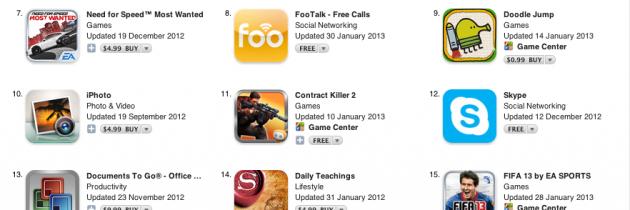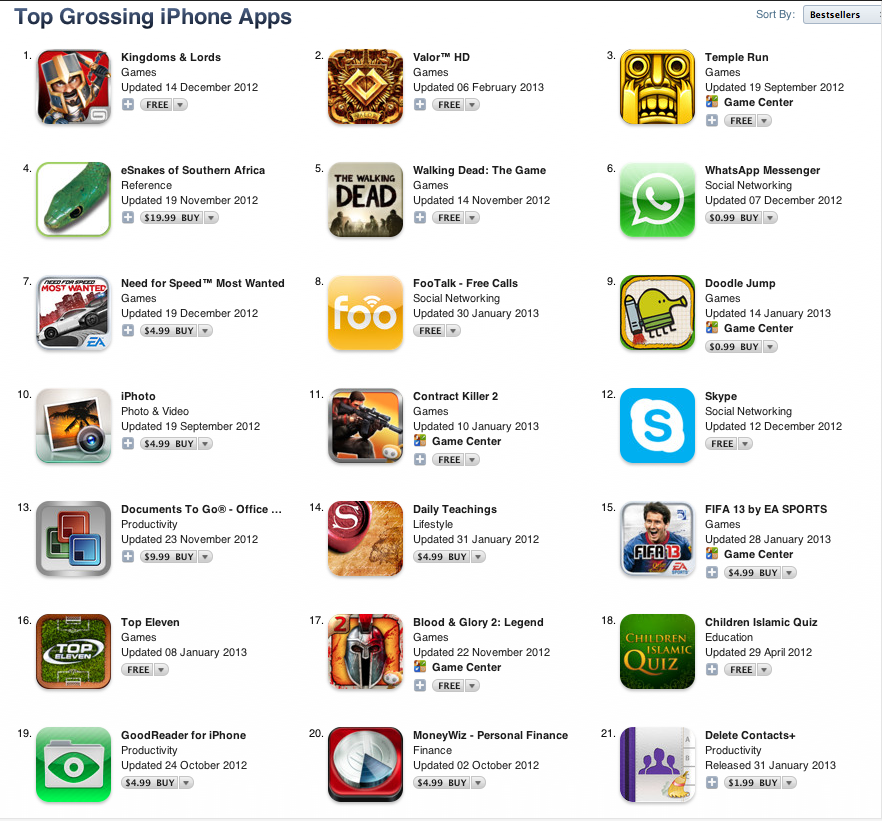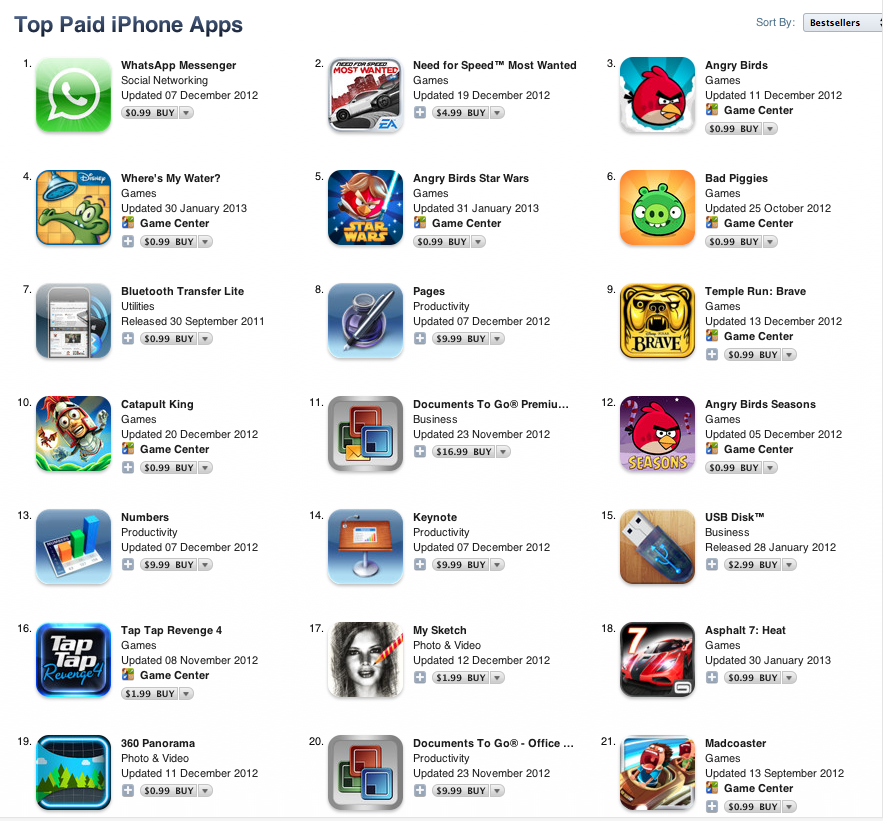The Pitfalls of the Free to Play Revenue Model
When someone looks at the top 25 grossing apps on the apple appstore and sees that nearly half of of them are F2P (Free to Play) while the other 1/4 are split between Free, and Premium apps. It indicates that perhaps building an app and implementing a Freemium revenue model is the way to go? While every app is unique in its own right, today we're going to cover 3 Pitfalls to the model that seems "ever so popular".
The folks over at W3i had a chance to capture the interview with Tim Wicksteed from GAMESbrief, which I have to share with you below.
"Surface: F2P is hard. As easy as it is to see the success stories, you don’t have to look much further to find the not-so-successful ones. For example Monkey Drum and Punch Quest both made the mistake of being too generous so that no one ever made the In-App Purchases (IAPs). For a one-man-band there are a whole lot of extra skills you have to learn to do F2P right. For example data acquisition and analysis, or the much harder to learn art of persuading players to part with their money inside your game without pushing them out. Not to mention the continued support of the game (service?) over the months following launch. That’s a much bigger time-commitment than just design, build, launch and a single patch to remove the bugs.
Floating in the middle: F2P haters exist. Some gamers are instantly turned off by the inclusion of IAPs within a game. They say they would rather pay upfront knowing they had the full game to enjoy without all the ads and reminders that they could be having more fun if they just paid a little more. In fairness I can sympathise. F2P can seem a bit like paying for a pen and then realizing you need to pay extra for ink… and then the ink runs out quicker than you thought it would. It’s a counter-intuitive idea for a very small percentage of your players to fund your entire game while the majority plays for free – somehow it doesn’t seem fair! I also get the feeling that a good proportion of F2P haters are traditional gamers – the same traditional gamers that are the target audience for Ionage. I sometimes worry that I’ll end up with a game that casual gamers won’t enjoy and hardcore gamers won’t touch out of principle.
Deeper still: The hidden cost of free. It’s argued that if users don’t pay upfront then they end up paying in some other way. This isn’t just about games of course – most of the internet is funded by advertising. Giving a product away for free means you have to build the business into the product. The question is: does letting the business into the game spoil it? An example of this in F2P could be deliberately building an annoying grind into the game to encourage players to spend to skip it.
As you can tell I’m concentrating on the negatives here. That’s because I’m actually a huge fan of the ideas behind F2P and I’m trying very hard to find flaws to stress test the idea and prepare myself for the potential pitfalls.
The thing is I don’t think any of these arguments can counter-balance the immense positives of F2P, briefly:
- Zero barrier to entry for new users
- No cap on spend (or at least a much higher cap)
- Freeloaders promote your game even if they don’t pay for it
… to name a few. These are invaluable to an indie developer struggling to get noticed amongst the sea of alternative titles.
I’ve decided that I’m going to give F2P a go. My conclusion is an obvious one – the success will depend on the execution. Of course there are examples of horribly manipulative games designed to squeeze their users for every last pound but there are also wonderful examples of games that are great fun even when you haven’t paid a penny!
As I started out saying, F2P isn’t easy. It’s not a magic wand that’s going to automatically increase my game’s revenue. I have to design my game and monetization so that I don’t give F2P haters ammunition. As Nicholas says in his F2P design rules I have to “be generous”. Instead of adding a grind and making people pay to remove it, why not make the premium content really worthy of that title? Equally I must not fall into the trap of Monkey Drum and Punch Quest and give too much away so there isn’t a reason to spend. Finally I need to make sure that the monetization technique complements the gameplay and does not hinder it.
I’ll finish with one of my favourite sayings that I think sums up the art of F2P: “People hate spending money on what they need but love to spend money on what they want!”




